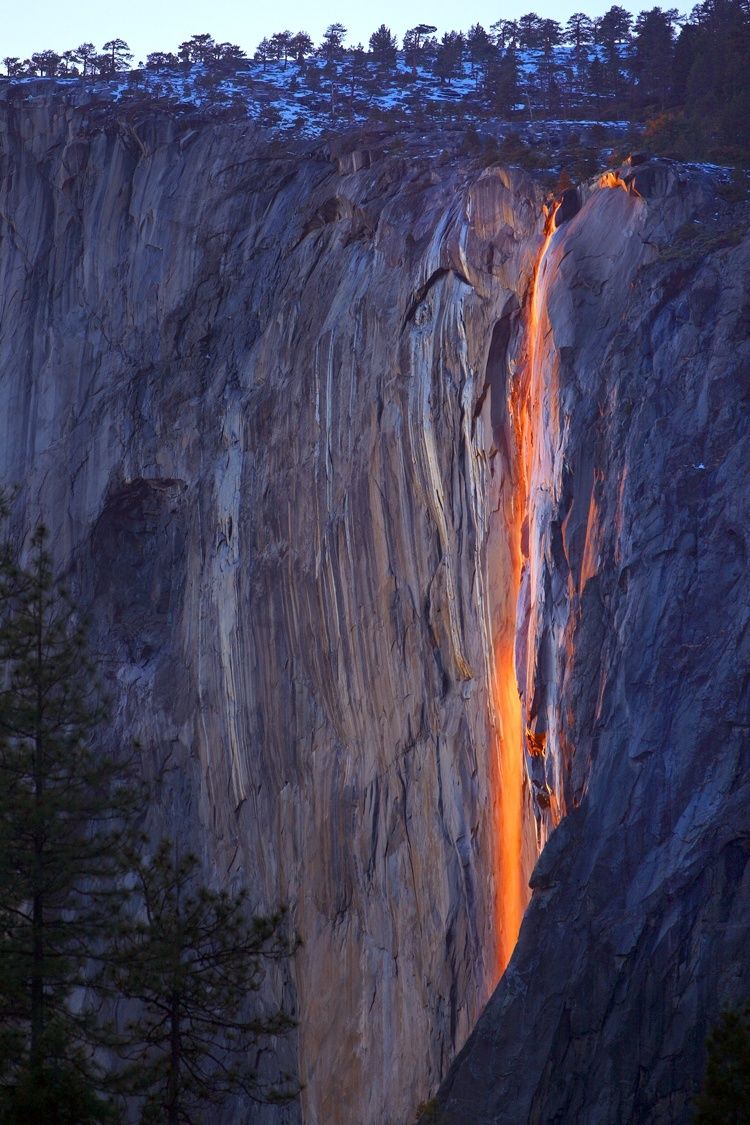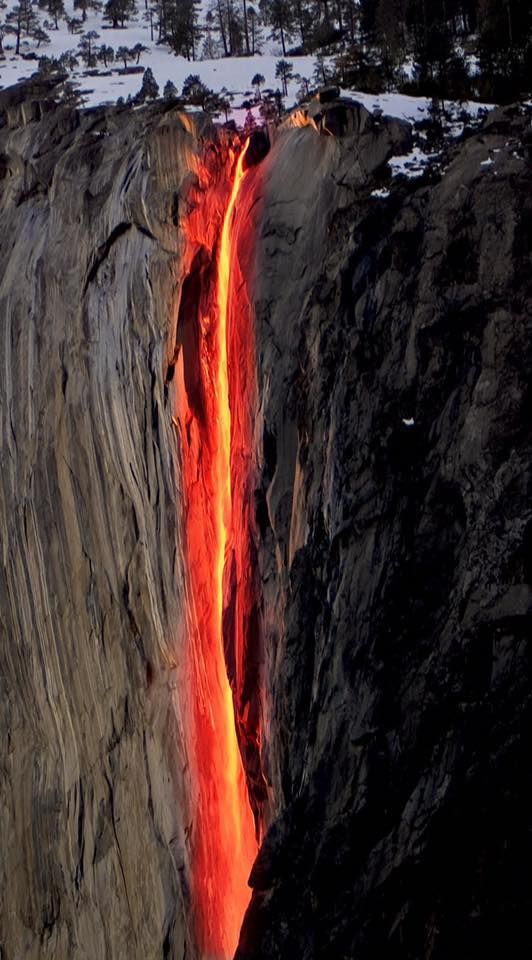

Have you ever seen images of the water at
Horsetail Fall glowing red like lava at Yosemite National Park? Or better yet, have you ever seen it in person?
“For a few weeks in February, if the water is flowing in Horsetail Fall, photographers and park visitors gather in the waning evening light for an amazing natural display,” Delaware North, the contracted concessioner for Yosemite National Park,
said. “The Horsetail Fall phenomenon appears when the angle of the setting sun sets the waterfall ablaze with reds and oranges, like a fire was falling down the cliffs on the shoulder of El Capitan.”

The first known photograph of the phenomenon
was taken by photographer Galen Rowell in 1973. The so-called “firefall” has captivated onlookers ever since. “It’s truly a wonder of nature,” said Elizabeth Christie, who posted a picture on Facebook of the waterfall glowing red.

The phenomenon occurs when conditions are just right, usually in mid to late February. Some years the firefall only happens on one or two days, according to the
National Park Service. Blurppy explains why the firefall is so “finicky”:
Although Horsetail Fall is visible from multiple viewpoints in Yosemite Valley, several factors must converge to trigger the firefall. If conditions are not perfect, the firefall will not glow.
First and foremost, Horsetail Fall must be flowing. If there’s not enough snowpack in February, there will not be enough snowmelt to feed the waterfall, which tumbles 1,570 feet (480 meters) down the east face of El Capitan. Likewise, temperatures must be warm enough during the day to melt the snowpack. If temperatures are too cold, the snow will stay frozen and Horsetail Fall won’t flow. (Lack of runoff is also why there is no firefall in autumn. Although the sun hits Yosemite Valley at the same angle in October as it does in February, Horsetail Falls is usually dry in October because the runoff that feeds it has long since dried up.)
Second, the western sky must be clear at sunset. If it’s snowing, raining, or even just cloudy, the sun’s rays will be blocked and Horsetail Falls will not light up. Winter weather can be highly variable in Yosemite, however, and days that start off cloudy can clear up by sunset.
If everything comes together and conditions are just right, the firefall will light up for about 10 minutes. To see Horsetail Fall glowing blood red is an almost supernatural experience.
As the sun begins to set, the falls turn a golden hue and eventually become a bright reddish orange.
Watch Yosemite National Park’s video to get a better understanding of the natural phenomenon and to see some stunning images of the firefall:

 233k
233k  41k
41k  Subscribe
Subscribe 